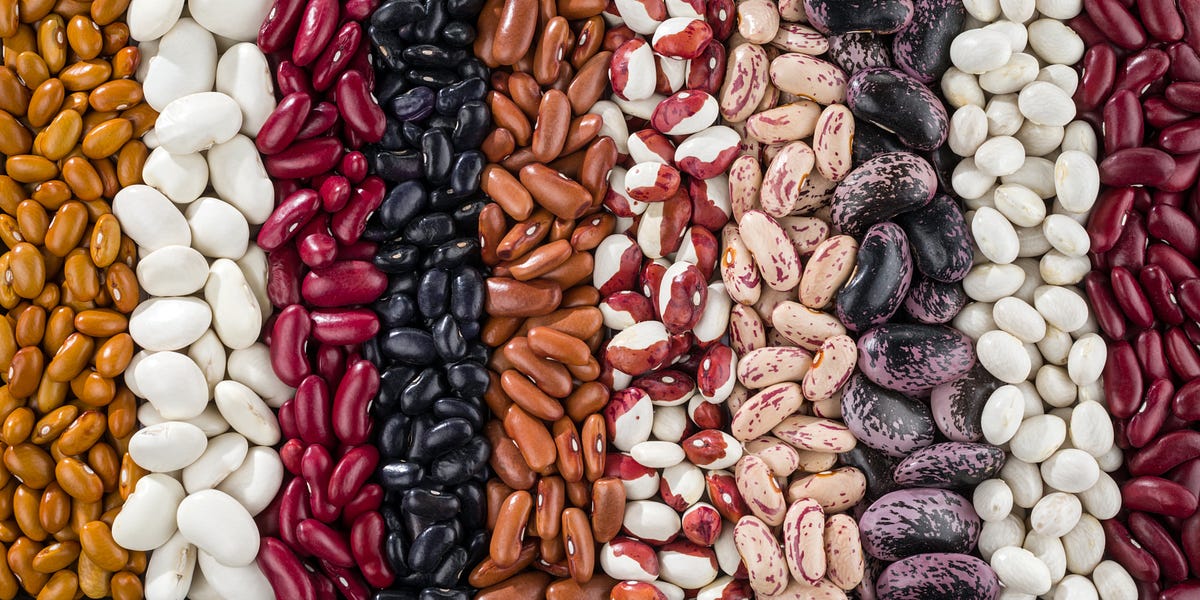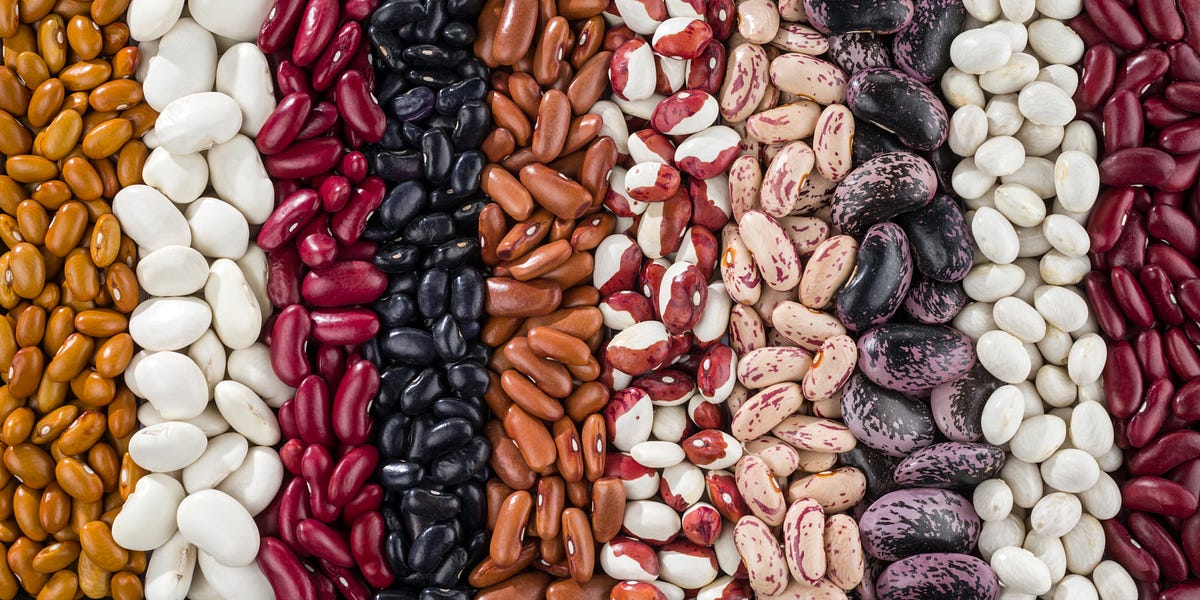InChristAlone
Member
Chris Masterjohn posted an article about how to test for molybdenum deficiency at home. It's behind a paywall though, anyone happen to be a paid subscriber?
"Molybdenum is necessary to convert the highly toxic sulfite to the highly useful sulfate. Sulfite can cause anxiety, sleep disruption, excessive startle reflex, or mast cell degranulation and pseudo-allergies. Sulfate is needed for detoxification and healthy hormone metabolism. Much of the nausea, sickness, and mental deterioration that can happen in pregnancy is due to sulfite accumulation. You’re likely to run deficient in molybdenum if you eat a lot of meat but don’t eat liver, and in general if you don’t eat beans.
Lab testing for molybdenum status is unsatisfactory. LabCorp and Quest both treat molybdenum tests as if they are designed for the sole purpose of ruling out toxicity.
Even Quest’s ridiculously labeled “Micronutrient, Molybdenum, Blood” reports a healthy or deficient molybdenum level simply as less than the cutoff for toxicity.
HDRI offers a whole blood molybdenum test, but I have found them very difficult to work with, being hit by months of delays.
Here I report a simple DIY home test for molybdenum status that requires no more than $10-50 worth of equipment, a molybdenum supplement, and 2-4 days of data collection. I have tested this on myself and believe that it works, although my validation should be considered anecdotal."

 chrismasterjohnphd.substack.com
chrismasterjohnphd.substack.com
Another article behind a paywall about molybdenum:
"If you’re a male trying to boost his testosterone or a woman trying to avoid nausea and histamine problems that ebb and flow with your hormones, you need to get enough molybdenum.
While we can generally say that eating a lot of meat, eggs, and dairy without eating liver or legumes is a recipe for tanking your molybdenum, it’s tough to know how much we are getting when the USDA and NCCDB databases, Cronometer, and anything else you might use to track your vitamins and minerals universally ignore molybdenum.
It makes it even worse that the RDA is based on not losing more molybdenum in the urine than you eat, rather than on optimizing hormones minimizing itchiness.
And it makes it 100 times worse that the RDA is based on studies of people consuming a measly 56 grams of protein, which really only works for you if you are into that sickly kind of look.
And it makes it 1000 times worse that the RDA study provided biochemical evidence that a quarter of people will accumulate the testosterone-tanking histamine-releasing sulfite on this intake!
Accordingly, here are my recommendations for how to get enough molybdenum from food, how to match it to protein intake, and a spreadsheet you can search through of molybdenum in 94 foods or food categories taken from four sources in the peer-reviewed literature."

 chrismasterjohnphd.substack.com
chrismasterjohnphd.substack.com
And another:
"Molybdenum is so powerful that it can completely restore fertility to mice that have been made infertile with cancer drugs!
But before you reach for that bucket of beans, be aware that too much molybdenum can itself cause infertility. The goal, then, is to get molybdenum into the sweet spot.
The role of molybdenum may in fact explain the controversy over whether meat is truly manly: sulfur amino acids raise the molybdenum requirement, so whether they tank testosterone or boost it to the moon will depend a lot on the rest of the diet.
Sulfite is generated from the sulfur amino acids in animal protein, and possibly from many other sulfur compounds, including those in sulfury vegetables. Many people also consume sulfite compounds used as preservatives in processed foods and are exposed to its use in medications, medical equipment, and cosmetics.
In rats, a variation of sulfite, sodium metabisulfite, tanks testosterone, destroys testosterone-producing Leydig cells, and shrinks the epididymis, the tubular structure around the testicles where sperm mature.
In another paper, this group showed that it also decreases sperm motility.
In that second paper, they showed that it decreased the activity of antioxidant enzymes superoxide dismutase, catalase, glutathione peroxidase, and glutathione reductase (see my antioxidant course on their significance). It decreased glutathione, and increased malondialdehyde (MDA), which is a breakdown product of oxidative damage to polyunsaturated fatty acids (found in “seed oils”). High-dose ginger partially reversed many, but not all, of these changes.
In mice, the sulfur-containing chemotherapy drug bisulfan causes infertility alongside low testosterone, low superoxide dismutase activity, and high MDA. Molybdenum completely restores fertility, normalizes superoxide dismutase and MDA, and raises testosterone even above the level in healthy control mice.
Most likely, sulfite poisons the antioxidant enzymes, leading to oxidative damage to lipids, thereby killing off the testosterone-producing cells and sperm-maturing tubes, leading to infertility. Molybdenum rescues these effects by converting sulfite to sulfate.
The mechanisms by which excess molybdenum causes problems are not entirely clear. While molybdenum does not stimulate metallothionein on its own, it dramatically enhances the metallothionein response to mercury, so it could interact with heavy metals to chelate zinc and copper. In ruminants, molybdenum reacts with hydrogen sulfide gas produced in the rumen to produce thiomolybdate, which prevents copper absorption and itself gets absorbed and poisons copper-dependent enzymes. It is generally assumed that thiomolybdate is not produced in humans and other non-ruminants, but this might not be true in the presence of excessive hydrogen sulfide gas induced by estrogen or a sulfur-reducing microbiome. When thiomolybdate is injected into rats, it frees copper from metallothionein. Since zinc and copper are critical to antioxidant defense, excess molybdenum may be creating deficiencies of them or altering their metabolism.
As discussed in this paper, munching on sulfite-preserved foods all day could easily get you up to 600 milligrams of sulfite, which is about half of what was used in that study to tank testosterone.
More importantly however, according to the sulfur chapter of Modern Nutrition in Health and Disease, humans excrete an average of 450-900 milligrams of elemental sulfur per day, which is the equivalent sulfur load as found in 1333-2667 milligrams per day of sodium metabisulfite. For a 70-kilogram person, this would be the equivalent sulfur load of 19-38 milligrams per kilogram bodyweight of sodium metabisulfite, and thus well above the dose that starts tanking testosterone in rats.
This is all sulfur flowing through the sulfite oxidase enzyme before it winds up in the urine.
All of that sulfur must be converted to sulfate by the molybdenum-dependent sulfite oxidase enzyme in order to be rendered safe and useful.
Thus, the sulfur we derive from our dietary protein taxes the molybdenum requirement and optimizing testosterone requires having enough molybdenum to tolerate that sulfur load.
What all of these studies miss is that the molybdenum you need is the amount that maximizes your conversion of sulfite to sulfate, not some particular amount circulating in blood, urine, or semen.
I recently produced a comprehensive guide to optimizing CoQ10 status in Does CoQ10 Deserve a Spot on Your Longevity Plan?
The Cheat Sheet has guidance for optimizing glutathione, copper, and iron status.
The “gold standard” would be to get the amount of molybdenum that maximally suppresses your own individual urinary sulfite.
Alternatively, you could measure testosterone on different molybdenum intakes to determine which one maximizes your testosterone, but that could take months."

 chrismasterjohnphd.substack.com
chrismasterjohnphd.substack.com
>>>>>>I surmise that the DIY test is a urine test for sulfite?
So another win for beans!! And another fail for the Peat diet which largely avoided every single bean out there.
"Molybdenum is necessary to convert the highly toxic sulfite to the highly useful sulfate. Sulfite can cause anxiety, sleep disruption, excessive startle reflex, or mast cell degranulation and pseudo-allergies. Sulfate is needed for detoxification and healthy hormone metabolism. Much of the nausea, sickness, and mental deterioration that can happen in pregnancy is due to sulfite accumulation. You’re likely to run deficient in molybdenum if you eat a lot of meat but don’t eat liver, and in general if you don’t eat beans.
Lab testing for molybdenum status is unsatisfactory. LabCorp and Quest both treat molybdenum tests as if they are designed for the sole purpose of ruling out toxicity.
Even Quest’s ridiculously labeled “Micronutrient, Molybdenum, Blood” reports a healthy or deficient molybdenum level simply as less than the cutoff for toxicity.
HDRI offers a whole blood molybdenum test, but I have found them very difficult to work with, being hit by months of delays.
Here I report a simple DIY home test for molybdenum status that requires no more than $10-50 worth of equipment, a molybdenum supplement, and 2-4 days of data collection. I have tested this on myself and believe that it works, although my validation should be considered anecdotal."

A Simple DIY Home Test for Molybdenum Deficiency
All you need is $10-$50 worth of equipment, 2-4 days, and a molybdenum supplement.
Another article behind a paywall about molybdenum:
"If you’re a male trying to boost his testosterone or a woman trying to avoid nausea and histamine problems that ebb and flow with your hormones, you need to get enough molybdenum.
While we can generally say that eating a lot of meat, eggs, and dairy without eating liver or legumes is a recipe for tanking your molybdenum, it’s tough to know how much we are getting when the USDA and NCCDB databases, Cronometer, and anything else you might use to track your vitamins and minerals universally ignore molybdenum.
It makes it even worse that the RDA is based on not losing more molybdenum in the urine than you eat, rather than on optimizing hormones minimizing itchiness.
And it makes it 100 times worse that the RDA is based on studies of people consuming a measly 56 grams of protein, which really only works for you if you are into that sickly kind of look.
And it makes it 1000 times worse that the RDA study provided biochemical evidence that a quarter of people will accumulate the testosterone-tanking histamine-releasing sulfite on this intake!
Accordingly, here are my recommendations for how to get enough molybdenum from food, how to match it to protein intake, and a spreadsheet you can search through of molybdenum in 94 foods or food categories taken from four sources in the peer-reviewed literature."

Missing From the Databases: Molybdenum
Optimizing your hormones and mental health by getting the amount of molybdenum you really need.
And another:
"Molybdenum is so powerful that it can completely restore fertility to mice that have been made infertile with cancer drugs!
But before you reach for that bucket of beans, be aware that too much molybdenum can itself cause infertility. The goal, then, is to get molybdenum into the sweet spot.
The role of molybdenum may in fact explain the controversy over whether meat is truly manly: sulfur amino acids raise the molybdenum requirement, so whether they tank testosterone or boost it to the moon will depend a lot on the rest of the diet.
Molybdenum Boosts Testosterone
Molybdenum is required for a number of reactions but first and foremost it is needed to convert the highly toxic sulfite to the highly useful sulfate.Sulfite is generated from the sulfur amino acids in animal protein, and possibly from many other sulfur compounds, including those in sulfury vegetables. Many people also consume sulfite compounds used as preservatives in processed foods and are exposed to its use in medications, medical equipment, and cosmetics.
In rats, a variation of sulfite, sodium metabisulfite, tanks testosterone, destroys testosterone-producing Leydig cells, and shrinks the epididymis, the tubular structure around the testicles where sperm mature.
In another paper, this group showed that it also decreases sperm motility.
In that second paper, they showed that it decreased the activity of antioxidant enzymes superoxide dismutase, catalase, glutathione peroxidase, and glutathione reductase (see my antioxidant course on their significance). It decreased glutathione, and increased malondialdehyde (MDA), which is a breakdown product of oxidative damage to polyunsaturated fatty acids (found in “seed oils”). High-dose ginger partially reversed many, but not all, of these changes.
In mice, the sulfur-containing chemotherapy drug bisulfan causes infertility alongside low testosterone, low superoxide dismutase activity, and high MDA. Molybdenum completely restores fertility, normalizes superoxide dismutase and MDA, and raises testosterone even above the level in healthy control mice.
Most likely, sulfite poisons the antioxidant enzymes, leading to oxidative damage to lipids, thereby killing off the testosterone-producing cells and sperm-maturing tubes, leading to infertility. Molybdenum rescues these effects by converting sulfite to sulfate.
Too Much Molybdenum Tanks Testosterone
In a separate study, however, this group showed in mice that molybdenum independently helps optimize antioxidant status and maximizes sperm number and quality. However, when molybdenum is doubled above the optimal level, these benefits start to wear off, and when it is quadrupled, molybdenum starts hurting antioxidant status and tanking sperm number and quality.The mechanisms by which excess molybdenum causes problems are not entirely clear. While molybdenum does not stimulate metallothionein on its own, it dramatically enhances the metallothionein response to mercury, so it could interact with heavy metals to chelate zinc and copper. In ruminants, molybdenum reacts with hydrogen sulfide gas produced in the rumen to produce thiomolybdate, which prevents copper absorption and itself gets absorbed and poisons copper-dependent enzymes. It is generally assumed that thiomolybdate is not produced in humans and other non-ruminants, but this might not be true in the presence of excessive hydrogen sulfide gas induced by estrogen or a sulfur-reducing microbiome. When thiomolybdate is injected into rats, it frees copper from metallothionein. Since zinc and copper are critical to antioxidant defense, excess molybdenum may be creating deficiencies of them or altering their metabolism.
How Much Sulfite Do You Need to Tank Your Testosterone?
The negative effects of sodium metabisulfite on rat testosterone and fertility kick in around 100 milligrams per kilogram bodyweight, which when converted from rats to humans is the equivalent of 17 milligrams per kilogram bodyweight.As discussed in this paper, munching on sulfite-preserved foods all day could easily get you up to 600 milligrams of sulfite, which is about half of what was used in that study to tank testosterone.
More importantly however, according to the sulfur chapter of Modern Nutrition in Health and Disease, humans excrete an average of 450-900 milligrams of elemental sulfur per day, which is the equivalent sulfur load as found in 1333-2667 milligrams per day of sodium metabisulfite. For a 70-kilogram person, this would be the equivalent sulfur load of 19-38 milligrams per kilogram bodyweight of sodium metabisulfite, and thus well above the dose that starts tanking testosterone in rats.
This is all sulfur flowing through the sulfite oxidase enzyme before it winds up in the urine.
All of that sulfur must be converted to sulfate by the molybdenum-dependent sulfite oxidase enzyme in order to be rendered safe and useful.
Thus, the sulfur we derive from our dietary protein taxes the molybdenum requirement and optimizing testosterone requires having enough molybdenum to tolerate that sulfur load.
Human Molybdenum Studies Show the Importance of Zinc
There are no human experimental trials on this topic, but there are several observational studies that have looked for correlations between molybdenum status and testosterone:- In the National Health and Nutrition Examination Survey 2011-2012 in the United States, higher testosterone is correlated with lower urinary molybdenum. However, this study did not adjust for zinc and copper status.
- In men attending an infertility clinic in Michigan, blood molybdenum was inversely associated with testosterone. The authors reported that this was extremely pronounced among those with low zinc, but they did not report the association with molybdenum separately among those with robust zinc status. This supports the negative impact of too much molybdenum being a result of its antagonism toward zinc, and suggests that it is meaningless to look at such associations without taking zinc into account.
- A study in Chinese men attending an infertility clinic looked for an association between testosterone and urinary molybdenum and did not find one.
- Another study in Chinese males found that various nutritional metals including zinc, copper, and molybdenum were negatively correlated with sperm metrics when they were measured in semen.
- A study in Polish men found that those with low total testosterone had the same molybdenum concentrations in their whole blood as those without low testosterone.
What all of these studies miss is that the molybdenum you need is the amount that maximizes your conversion of sulfite to sulfate, not some particular amount circulating in blood, urine, or semen.
Sulfite Isn’t All About Molybdenum
The detoxification of sulfur compounds begins with the CoQ10-dependent and glutathione-dependent conversion of sulfide to sulfite, and then the molybdenum-dependent conversion of sulfite to sulfate involves the delivery of sulfite electrons to complex IV of the respiratory chain, which is dependent on iron and is very specifically dependent on copper. The role of copper in complex IV is the singular direct role of copper in energy metabolism.I recently produced a comprehensive guide to optimizing CoQ10 status in Does CoQ10 Deserve a Spot on Your Longevity Plan?
The Cheat Sheet has guidance for optimizing glutathione, copper, and iron status.
How Much Molybdenum Do You Need?
In the Molybdenum lesson I defaulted to the RDA of 45 micrograms per day because there is so little research. However, it is highly likely that sulfite oxidase is upregulated when you have more sulfite to detoxify, and that this raises the molybdenum requirement. Thus, the molybdenum you need is probably dependent on your sulfur load. See my recommendations here.The “gold standard” would be to get the amount of molybdenum that maximally suppresses your own individual urinary sulfite.
Alternatively, you could measure testosterone on different molybdenum intakes to determine which one maximizes your testosterone, but that could take months."

The Unknown Testosterone Nutrient
Move over boron, there's a new guy in town.
>>>>>>I surmise that the DIY test is a urine test for sulfite?
So another win for beans!! And another fail for the Peat diet which largely avoided every single bean out there.
Last edited:
